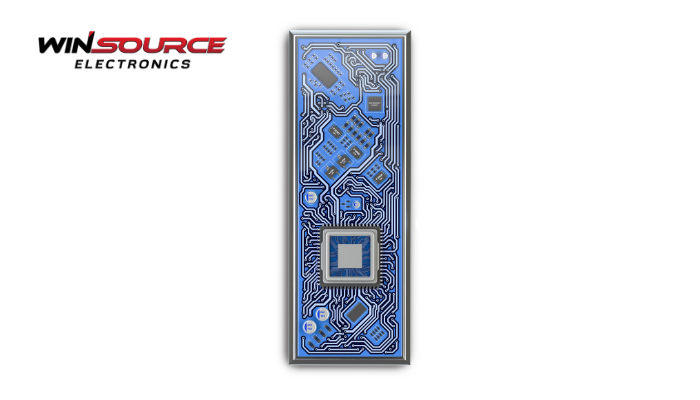
* Question
How to design UHF RFID anti-metal tag antenna?
* Answer
Designing a UHF RFID anti-metal tag antenna involves several key considerations to ensure the antenna performs effectively in environments where metals are present, which typically cause interference or detuning of the RFID signal. The design must address challenges posed by the proximity of metal surfaces, such as reflection, absorption, and signal distortion. Here’s a basic guide to help you design a UHF RFID anti-metal tag antenna:
1. Understand the Challenges
– Metal Interference: Metals reflect and absorb radio frequency signals, which can weaken or disrupt the communication between the RFID tag and reader. Metal surfaces can cause detuning or a loss of signal.
– Tag Placement: Antennas designed for metal environments must be able to work when placed directly on or near metal surfaces.
– Impedance Matching: The antenna must be designed to match the impedance of the RFID chip for maximum power transfer and signal strength.
2. Choose the Right Antenna Type
Several antenna types are commonly used for UHF RFID, and the design will vary depending on the specific application (e.g., label, tag, or embedded antenna). For an anti-metal tag antenna, here are some approaches:
– Monopole Antenna with Ground Plane: This is a common choice for anti-metal designs because the ground plane helps direct and reflect signals to improve performance. The ground plane can be the metal surface itself, or a separate metallic element designed into the antenna structure.
– Patch Antenna: A microstrip patch antenna can be designed to be compact and resistant to the detuning effects of metal. It’s often used in embedded or rigid tags.
– Dipole Antenna with Metal Shielding: This type of antenna may have a shield or a layer of dielectric material to protect it from the metal surface, preventing signal degradation.
– Slot Antenna: Slot antennas are effective for anti-metal applications because they can be designed to have a robust impedance match and direct radiation patterns.
3. Design Principles for Anti-Metal Antennas
– Impedance Matching: Ensure the antenna impedance is matched to the RFID chip’s input impedance (usually 50 ohms) to minimize signal loss. This can be achieved by adjusting the dimensions and shape of the antenna.
– Material Selection: The material used for the antenna should have low loss at UHF frequencies. Common materials include copper or silver for the conductive parts of the antenna, and dielectric materials (like ceramics or plastics) to support the antenna structure.
– Shape and Size: The physical size of the antenna will be determined by the operating frequency (typically 860–960 MHz for UHF RFID). The design should optimize the length of the antenna elements to resonate at the desired frequency while being compact enough to fit the tag form factor.
– Ground Plane Considerations: The ground plane should be sufficiently large to reflect the signal back toward the reader. If the tag is attached to a metal object, the metal itself often acts as the ground plane, but care should be taken to ensure the antenna design is robust against detuning.
– Anti-Metal Features: Use shielding or design techniques to isolate the antenna from the metal surface. For example, coaxial feed or capacitive coupling techniques can help prevent the antenna from coupling directly with the metal and losing efficiency.
4. Simulation and Optimization
– EM Simulation: Use electromagnetic simulation software (like HFSS, CST Microwave Studio, or ANSYS) to model the antenna’s behavior in the presence of metal surfaces. These tools can help visualize how the antenna will interact with the metal and optimize the design to ensure minimal interference and maximum range.
– Bandwidth and Tuning: Ensure that the antenna is tuned to cover the required frequency range (860–960 MHz). Bandwidth should be wide enough to accommodate slight frequency shifts due to the proximity of metal objects.
5. Testing and Adjustment
– Prototyping: Once you have a preliminary design, create prototypes of the antenna and test them in real-world environments with metal surfaces.
– Performance Testing: Measure the RFID tag’s read range, power consumption, and durability when attached to metal objects. Make sure the tag performs effectively in typical operating conditions.
6. Antenna Integration
– Tag Form Factor: The antenna must be integrated into the tag form, whether it’s a label, an embedded tag, or a rigid tag. For anti-metal designs, ensure the antenna is well-protected from physical damage, especially if the tag will be exposed to harsh environments.
– Antenna Placement: Ensure the antenna is placed in a position on the metal object that optimizes the performance (e.g., away from areas that might cause excessive detuning or shielding).
7. Consider Commercial Solutions
If designing from scratch seems too complex or time-consuming, consider commercially available anti-metal RFID tag antennas. Many manufacturers have optimized antenna designs that work well in metal environments. These can provide a good starting point or reference for your own designs.
Final Thoughts
Designing an effective UHF RFID anti-metal tag antenna requires careful attention to the interplay between antenna geometry, material properties, and the surrounding environment. A good understanding of electromagnetic theory and simulation tools can help refine the design, ensuring that the antenna works well despite the challenges posed by metal surfaces.

COMMENTS